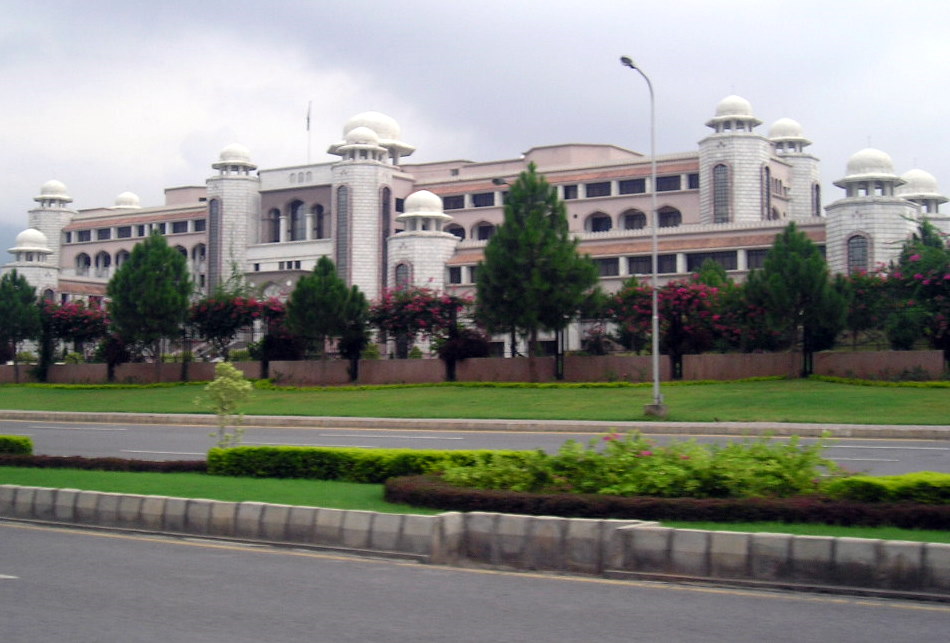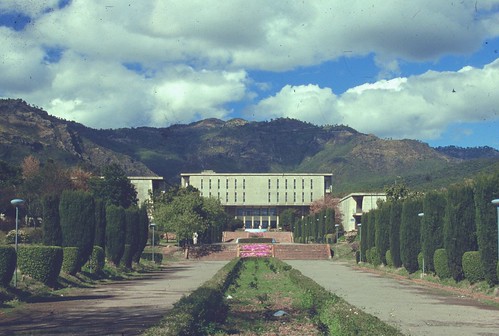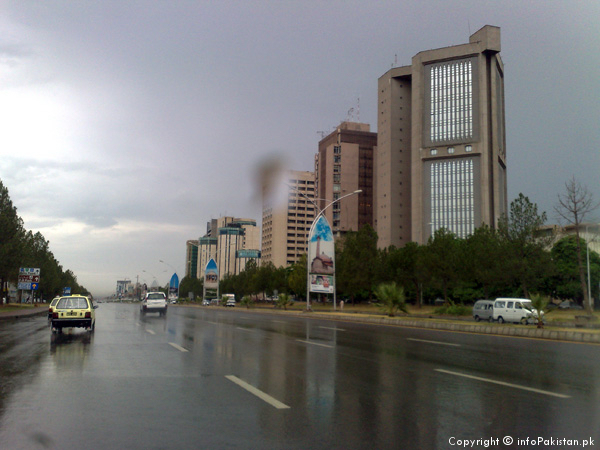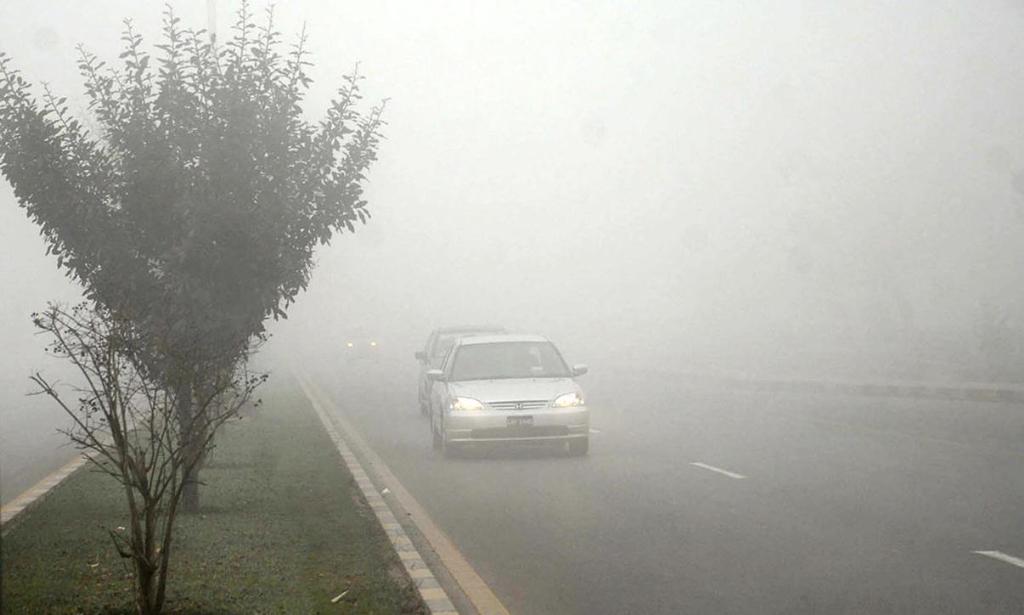Islamabad (Urdu: اسلام آباد Islām ābād) is the capital of Pakistan and the tenth largest city in the country.

Parliament House Islamabad
Located within the Islamabad Capital Territory (ICT), the population of the city has grown from 100,000 in 1951 to 1.15 million as of 2011. The greater Islamabad-Rawalpindi Metropolitan Area is the third largest conurbation in Pakistan with a population of over 4.5 million inhabitants.
 Prime Minister house Islamabad
Prime Minister house Islamabad
Islamabad is located in the Pothohar Plateau in the northeastern part of the country, within the Islamabad Capital Territory. The region has historically been a part
of the crossroads of Punjab and Khyber Pakhtunkhwa with Margalla pass acting as the gateway between the two regions.
of the crossroads of Punjab and Khyber Pakhtunkhwa with Margalla pass acting as the gateway between the two regions.

Faisal Mosque Islamabad
The city was built during the 1960s to replace Karachi as Pakistan's capital. Islamabad is a well-organised international city divided into several different sectors and zones. It is regarded as the most developed city in Pakistan and is ranked as a Gamma- world city. The city is home to Faisal Mosque, the largest mosque in South Asia and the fourth largest mosque in the world.

Supreme Court of Pakistan
Islamabad has the highest literacy rate in Pakistan and is home to the some of the top-ranked universities in Pakistan, including Quaid-i-Azam University, Pakistan Institute of Engineering & Applied Sciences and National University of Sciences and Technology.Allama Iqbal Open University in Islamabad is one of the world's largest universities by enrollment.

National university of sciences and technology NUST H12 Islamabad

Quaid e Azam University Islamabad
Located at the foothills of the Margalla
mountains, Islamabad is a thriving modern and well-organized city.
The city is very green due to the city's climate. There is also much
wildlife in the north in the Margallas, which have been turned into a
national park. The city is a fine blend of modern and traditional
architecture, of which the Saudi-Pak Tower
(above left) is a good example.

Islamic International university islamabad

Blue area Islamabad
The city is home to the
Faisal Mosque,
which is well known for its unique architecture and immense size.
Numerous government buildings such as the National Assembly building,
Convention Centre, the Presidency, Prime Minister's Secretariat
(above centre), the Supreme Court (above second from right) and the
Islamabad Secretariat are located at the foothills of Margallas.
The palatial PM's secretariat, constructed at the Constitution
Avenue with a
total cost of one billion rupees, was handed over to Prime Minister
Sharif
on 14 August 1997, the occasion of the 50th anniversary of Pakistan.
The
work on the building, spread over an area of 40,000 square meters,
was
started in 1993 during the Benazir Bhutto term of premiership. The
Secretariat Blocks are the administrative and policy planning nerve
center
of the country. These four to six storied buildings cover an area of
92,900
square meters. The Aiwan-e-Sadar (Presidency) is the official
residence of
the Head of State. The site is spread over an area of 20 acres, with
the
buildings covering over 30,000 square meters. The Parliament
building is 5
stories tall, and includes both Houses of Parliament with a built up
area of
over 55,000 square meter including offices, committee rooms,
libraries and
cafeterias. Almost all foreign embassies are located in the
Diplomatic Enclave, close to government buildings off the Constitution
Avenue. The city
also houses the Quaid-e-Azam University. Blue Area (above right) is
the
main business centre of Islamabad.

Pakistan Monument Islamabad
The city is divided into eight largely
self-contained zones, each characterized by its predominant usages (such as
for government, the diplomatic enclave, the commercial district, the
educational sector, the industrial area, commerce, light industry,
residential areas and so on) each with its own shopping area and park. It is
a modern and carefully planned city. There are ample opportunities for
walking, jogging, hiking and trekking around Islamabad in the Margalla Hills
range, which offers excellent opportunities for short and long hikes with
magnificent vistas opening up on all sides. A network of trails having more
then 120 kilometres total length has been developed.
 Islamabad lake
Islamabad lake
The
National Monument atop Shakarparian Hills in Islamabad,
is a spectacular monument that
represents the four provinces and three territories of Pakistan. The
structure comprises four blossoming flower petals, built of granite,
representing the unity of Pakistani people. From air the monument looks like
a star (center) and a crescent moon (formed by walls forming the petals),
these represent the star and crescent on Pakistan's flag. The blooming
flower shape of the monument represents Pakistan's progress as a rapidly
developing country. The four main petals of the monument represent the four
provinces (Balochistan, North West Frontier Province, Punjab, and Sindh),
while the three smaller petals represent the Northern Areas, Azad Kashmir
and the Federally Administered Tribal Areas. The Monument has been designed
to reflect the culture and civilization of the country and depicts the story
of the Pakistan Movement, dedicated to those who sacrificed themselves for
future generations. The inner walls of the petals are decorated with murals.
The central platform is made in the shape of a five-pointed star which is
surrounded by a water body. A metallic crescent surrounding the star is
inscribed with sayings of Muhammad Ali Jinnah and poetry of
Allama Iqbal.
 Islamabad beautiful road
Islamabad beautiful road
 Islamabad beautiful road
Islamabad beautiful road
The shrine of Syed Meher Ali Shah of Golra Sharif is located 18 km from Rawalpindi, in
sector E-11 of Islamabad. He was descendant of Syed Abdul Qadir Gilani of Baghdad. He was preached and
spread the message of Islam during the turbulent times in South Asia.
The climate of Islamabad has a typical version of humid subtropical climate, with hot summers accompanied by a monsoon season followed by fairly cold winters.

Rain in Islamabad

The hottest months are May and June, where average highs routinely exceed 38 °C (100.4 °F).The monsoon season is from June to September, with heavy rainfalls and evening thunderstorms with the possibility of cloudburst.
Winters are lasted from November to March with temperatures variable by
location.
 Winter in islamabad
Winter in islamabad
In Islamabad, temperatures vary from cold to mild, routinely
dropping below zero. In the hills there is sparse snowfall. The weather
ranges from a minimum of 3.9 °C (39.0 °F) in January to a maximum of 46.1 °C (115.0 °F) in June. The average low is 2 °C (35.6 °F) in January, while the average high is 40 °C (104.0 °F) in June. The highest temperature recorded was 48 °C (118.4 °F) in June, while the lowest temperature was −4 °C (24.8 °F) in January
.On 23 July 2001, Islamabad received a record breaking 620 millimetres
(24 in) of rain fell in just 10 hours. It was the heaviest rainfall in
24 hours in Islamabad and at any locality in Pakistan during the past
100 years

 Daman e Koh Road islamabad
Daman e Koh Road islamabad
No comments:
Post a Comment